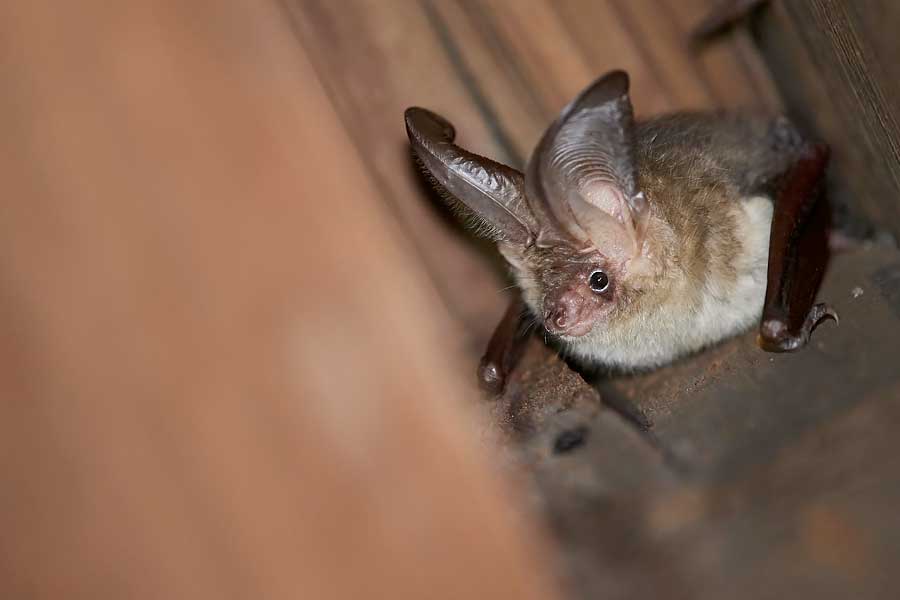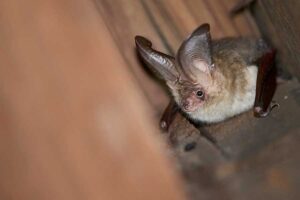All four species roost in buildings and other structures, using different roosts through the year as maternity roosts, hibernation roosts, mating roosts, feeding roosts etc. None of these species roost in trees, and they will not use bat boxes. In the summer they largely roost in warm attics, roof spaces and sometimes cellars or boiler rooms. Females tend to congregate in large maternity roosts whilst males and non-breeding females often roost singly during the summer months, sometimes sharing roost spaces with other bat species.
In winter horseshoe bats and grey long-eared bats hibernate in cellars, caves and mines where temperatures are stable, and humidity is high. Serotines hibernate in cavity walls, and disused chimneys. The two horseshoes are the only bats that you will see hanging upside down. These species do not generally adapt well to changes in existing roosts or to using new roosts, so it is vitally important to protect existing roosts.
All feed on flying insects within a few kilometres of their roosts. All need a patchwork landscape with a range of insect rich habitat which can be used at different times of year, including wetlands, species rich meadows, woodlands, stream corridors etc. All need their roosts and feeding habitat to be connected by dark linear features such as hedges, woodland edges, rivers and streams.
All species are very sensitive to light and will avoid lit areas.
Given their requirements these species are all great indicators of a healthy interconnected insect rich environment.


